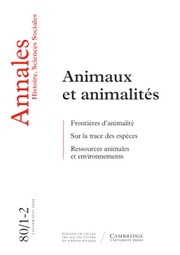Article contents
Les attitudes devant la mort : problèmes de méthode, approches et lectures différentes
Published online by Cambridge University Press: 25 May 2018
Extract
Les attitudes collectives devant la mort sont devenues un des problèmes majeurs que se pose actuellement l'histoire des mentalités. On serait tenté de dire l'histoire française des mentalités, ce qui serait injuste pour les travaux importants d'A. Tenenti — pour ne point remonter au classique Huizinga —, ce serait en tout cas aujourd'hui inexact : Emmanuel Le Roy Ladurie s'est trompé dans le diagnostic qu'il portait dans son article sur « la nouvelle histoire de la mort » (dans Le territoire de l'historien, 1973, pp. 393-403) lorsqu'il a cru pouvoir relever le désintérêt actuel des écoles anglo-saxonnes pour une curiosité morbide bien européenne : contagion depuis lors, ou plus fondamentalement rencontre de préoccupations identiques, c'est aux États-Unis que Philippe Ariès vient de publier son ouvrage Western attitudes towards death (John Hopkins University Press), ce qui prouve bien que l'historiographie internationale est tout entière concernée.
Summmary
The author presents the progress achieved in the studies dealing with man's attitude towards death. Several recent works have clearly indicated the importance of this question for historians of mental habits and more particularly for those who study collective attitudes and behaviour over long periods of time. The article reviews the research in the field up to the present and then examines the different approaches (descriptive, impressionistic, or on the contrary “serial”) required for the study of a case which is both replete with information about human behavior and protected by many taboos. The collected data are used to compare several of the “models” which have been put forth to explain the évolution ofthe phenomenon from the Middle Ages to the present day; in particular the “Ariès” model (Western Attitudes towards Death) and the Vovelle model (Mourir autrefois). This comparison leads to the final development on the sensitive question; why does the image of death change?
In conclusion, the author poses the problem of the phenomenon which we have been living for several years and even more markedly for the last few months: why, at the very time the “death taboo” model seemed self-evident to our contemporary societies, the spectacular movement towards a rediscovery of death, and this not only in the field of science?
- Type
- Autour De La Mort
- Information
- Copyright
- Copyright © Les Éditions de l'EHESS 1976
- 7
- Cited by


